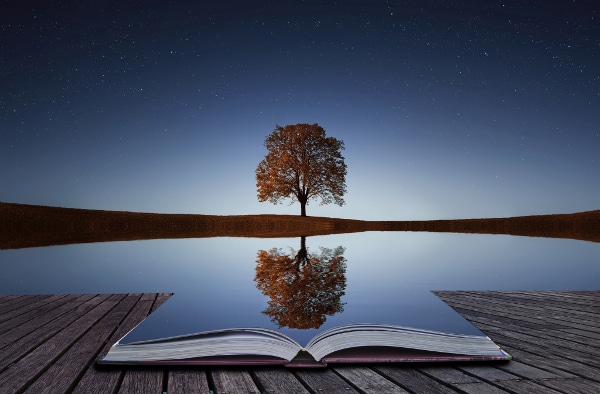
Research shows that outstanding leaders take time out to engage in reflective practice. Just think about for a moment…what did Einstein, Marie Curie, Churchill, Shackleton, and Darwin all have in common? They were visionaries, and they all kept journals.
The process of journaling can help leaders with:
- improving memory.
- more effective decision-making.
- reducing stress, depression, and anxiety.
- developing a positive/growth mind-set.
- creativity and the development of ideas.
- taking action on ideas and goal achievement.
- building self and peer-awareness – noticing patterns in self, in others, and in the world around you.
Top tips:
- Keep it small, especially to start with – just 10-15 minutes a day.
- Make it a habit – choose a time of the day to journal that works best for you. It might be at the start of your day, after lunch, or at the end of your day.
- Make it real – There is something about the process of writing that connects more deeply and seems more real. If you can, invest in a paper journal – anything with blank pages. If you’re definitely digital, try the Day One app.
- Protected time – block it off in your schedule as an appointment or meeting.
- Be still – take just one minute to be still and breathe well before you start. If your mind is just too busy, go for a walk and take your journal with you. Exercise burns through cortisol, and repetitive, physical activity activates the creative parts of our brain.
- No judgment – there’s no teacher to check your spelling, the quality of your content, or to give you a grade. So just let it flow. Some days it’ll be a raging torrent of thoughts, and on other days it might be just a trickle (or maybe even a drought). Either way is fine.
- Review – every two to four weeks, review your journal. What patterns do you notice? Reflect on your reflections.
10 questions for your leadership journal
- What is present for me now?
- What’s going well? What’s creating that?
- What challenges did I face, and what created them?
- What requires more attention tomorrow?
- How do I feel about my performance as a leader today?
- What strengths do I notice in myself today?
- What strengths and contributions do I notice in others today?
- What has contributed to my happiness (or the happiness of my team) this week?
- What three things am I grateful for?
- What actions am I committed to taking tomorrow?
Want a more detailed structure?
Developed by Graham Gibbs in 1988, the Gibbs Reflective Cycle helps bring some structure to the process of reflection and learning. This process can be used for individual reflection as well as team/project reviews.

Summary of cycle/stages:
- Description of the experience
- Feelings and thoughts about the experience
- Evaluation of the experience, both good and bad
- Analysis to make sense of the situation
- Conclusion about what you learned and what you could have done differently
- Action plan for how you would deal with similar situations in the future, or general changes you might find appropriate.
Step 1: Description
During this step, you describe the situation, event, or activity in detail, without drawing any conclusions right away. Stick to the facts. Example questions might include:
- What happened?
- When did it happen?
- Where did it happen?
- Who was involved?
- Why were they involved?
- What did you do?
- What did other people do?
- What was the result of these actions?
- What did you want to happen?
Make sure you include all of the important details. For instance, why other people were involved in the situation in question.
Step 2: Feelings
This phase is about the feelings, thoughts, and emotions that were triggered during the event, activity, or situation described in step 1. The intention is not to reflect on or discuss these in detail at this stage. Collection and awareness is the most important goal of this phase. Example questions might include:
- What did you feel leading up to the event?
- What did you feel during the event?
- What did you feel after the event?
- What do you think and feel as you look back on the situation, now?
- What do you think other people felt during event?
- How do you think others feel about the event now?
Step 3: Evaluation
In this step, you ask yourself whether the experience captured in step 1 was good or bad. Which approach worked well and in what way(s)? Which approach didn’t work as well? Example questions might include:
- What went well during the event or activity?
- What didn’t go so well?
- What did you do to contribute to the situation?
- What contribution did other people make?
- Were there any other contributing factors?
Step 4: Analysis
This phase is about what you have learned from the situation, event, or activity. Because of the experience, you now know what to do in similar, future situations. This means that both positive and negative things, and/or problems you experienced, will be written down and analyzed individually. After all, people learn from their mistakes. Example questions might include:
- Why did things go well?
- Why didn’t it go well?
- What sense can I make of the situation?
- What knowledge – my own or others (literature, models, theories, frameworks etc.) can help me understand the situation?
Step 5: Conclusion
This is the step where you take a step back and look at yourself from a distance. Here you ask what else you could have done in this situation. What was missing or needs changing for a different result? The information gathered earlier is very valuable in this step and can encourage you to come to an effective conclusion. Example questions might include:
- What is there to learn from this situation?
- To what positive experience did the event, situation, or activity lead?
- To what negative experience did the event, situation, or activity lead?
- What will you do differently if the event, situation, or activity were to happen again in the future?
- Which skills do you need to develop yourself in a similar event, situation, or activity?
- What else is there to appreciate about this situation?
Step 6: Action plan
- Next steps, actions, and commitments.
- STRAM Objectives
- GATE Goals
